
Western Australia is an amazing destination full of inspiring natural attractions and unique travel opportunities. Less than three hours from Perth, between Cape Naturaliste Lighthouse and Cape Leeuwin Lighthouse, lies one of the best hikes in Australia.
The Cape to Cape trail has a special appeal, with this spectacular destination connected to Margaret River but isolated from the rest of the world.
The 125 km Cape to Cape track distance can be covered in 7 days, and there are lots of incredible sights to see. From spectacular rock formations to the rugged coastline, from forest scenery to beautiful wildflowers, you can explore diverse sights along the way.
This article covers everything you need to know about the Cape to Cape walk track, including a packing list, a hiking schedule, and a camping guide.
Long walks in remote locations call for a little planning. If you want to travel safely and enjoy yourself, you need to have the right gear by your side. From walking boots and water bottles to a tent and sleeping mat, the following items are essential when tackling the Cape to Cape hike.
Check out our family camping checklist for a more detailed list.
The Cape to Cape trail runs along the Leeuwin-Naturaliste Ridge from Cape Naturaliste to Cape Leeuwin. The total distance is 125km, but this does not include the Meelup Trail or the linking paths from Dunsborough.
While you can do this walk in as little as 4-5 days, the following itinerary is based on a much-loved and relatively easy week-long schedule.
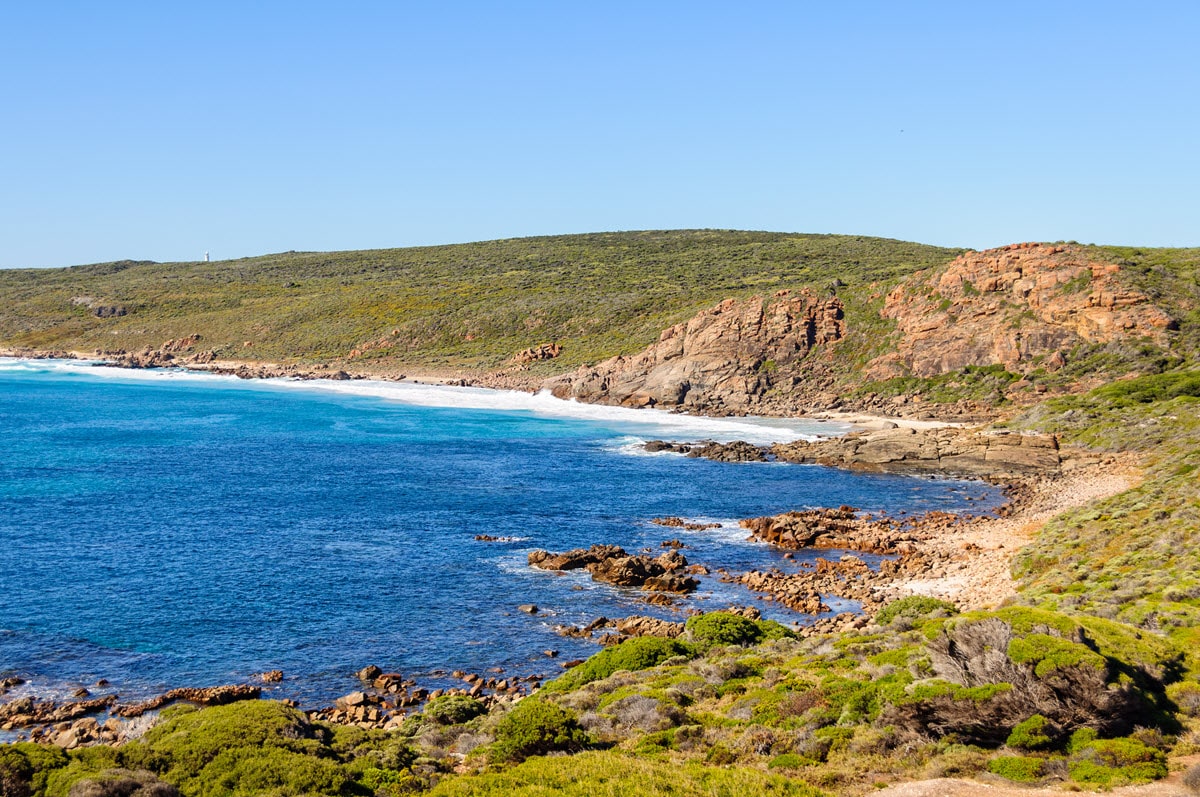
Beautiful views of Sugarloaf Rock Nature Reserve in Leeuwin-Naturaliste National Park.
While you can walk the Cape to Cape track from south to north, the recommended route starts at Cape Naturaliste and heads down.
You can park close to the Cape Naturaliste lighthouse and register your walk in the guest book at the beginning of the trail. The first leg of the journey is one of the easiest at just 15 km and 5 hours.
While most nights on this trail are spent at national park campsites, day 1 heads to the town of Yallingup, where you can find lots of accommodation options. The walk itself offers stunning coastline views, with Sugarloaf Rock being probably the biggest highlight.
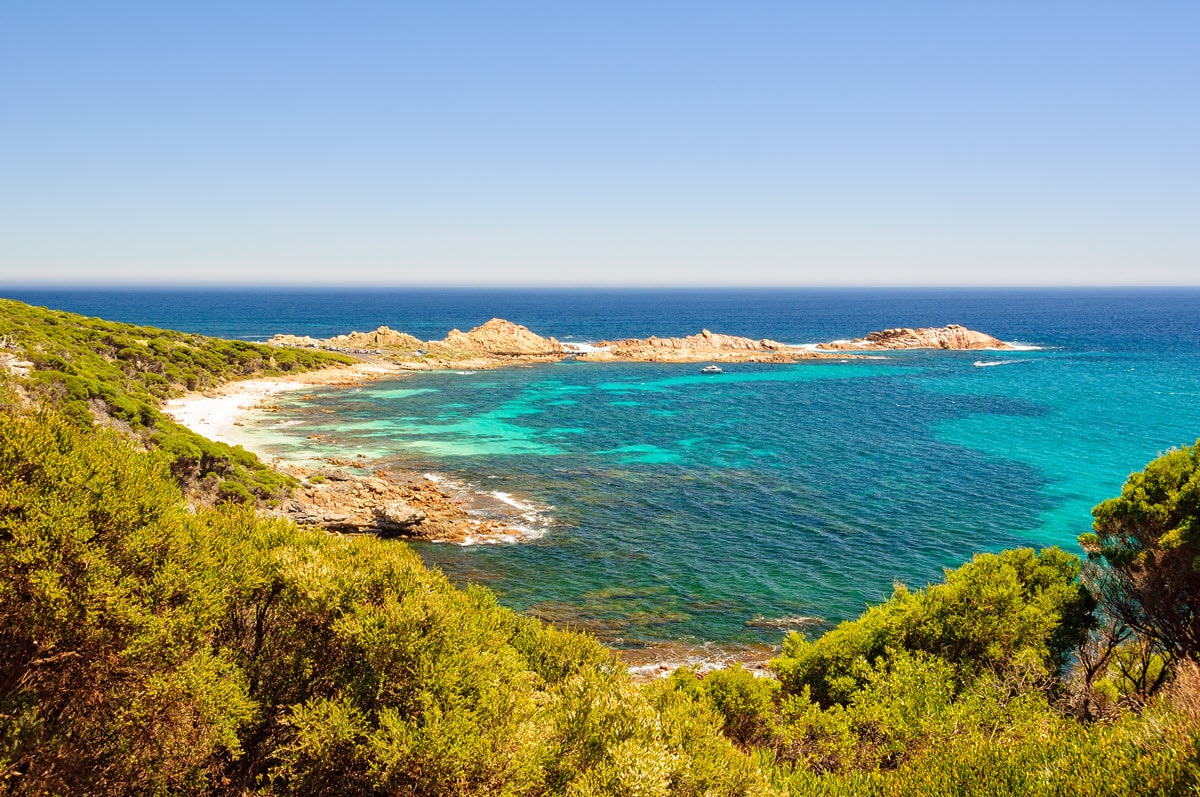
A series of granite rocks in the Indian Ocean at Canal Rocks in Yallingup, Western Australia.
As you emerge from your slumber on day 2, your legs should still be quite fresh. That's a good thing, with this day being one of the longest on the itinerary at 21 km and 7 hours.
While some parts of the hiking track can feel like hard work, the landscape in this section is very diverse. There are lots of places to slow down and rest, including The Aquarium, Canal Rocks, and Injidup Natural Spa.
Moses Rock Campsite is a great sight after a long day, with this free national park campground offering basic toilet, picnic table, and rainwater facilities.
If you are looking for somewhat luxury accommodation, you can also stay at the nearby Ellensbrook Homestead.
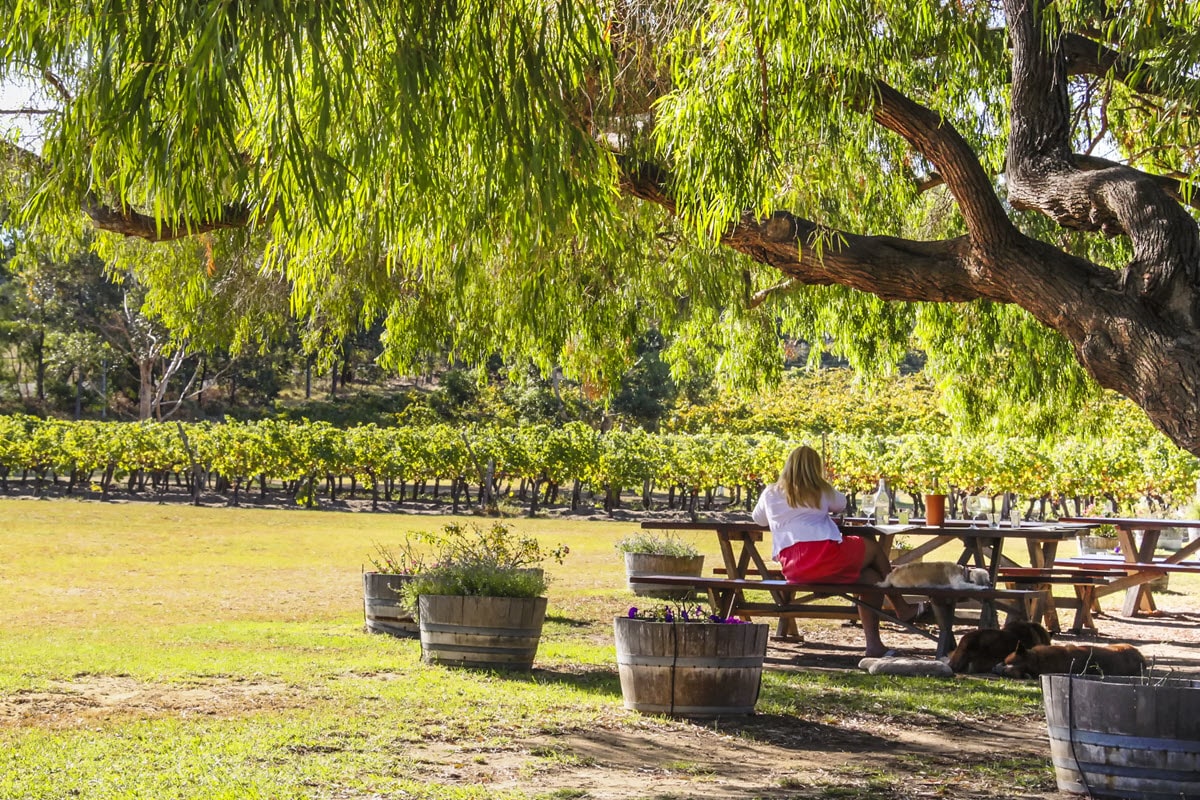
Relaxing at a table under the tree in Wilyabrup, Western Australia.
The third day of your big adventure heads along the beach, before heading uphill through coastal scrub and picturesque cliffs. This section of the walk is roughly 19 km, which should take you around 6 hours.
There's a lot to see along the way, including the stunning Wilyabrup Sea Cliffs, or head further inland to local Margaret River wineries and vineyards.
While this is a relatively long section, you can treat yourself at Gracetown just 2 hours from the start. With cold drinks, fresh groceries, and delicious pastries available, you can stock up for the rest of the day.
Meekadarabee Falls is a beautiful spot further down the trail, and Ellensbrook Campsite offers toilets, picnic tables, and rainwater free of charge.

The mouth of Margaret River at the northern end of Calgardup Bay in Prevelly Western Australia.
The next stage of the journey is the shortest at just 15 km, which you should cover in 5 hours at a relatively leisurely pace.
This section of the Cape to Cape track has spectacular views, beautiful beaches, and hidden natural gems not accessible by car. There are no national park campsites on day 4, so you will need to organise accommodation in the town of Prevelly.
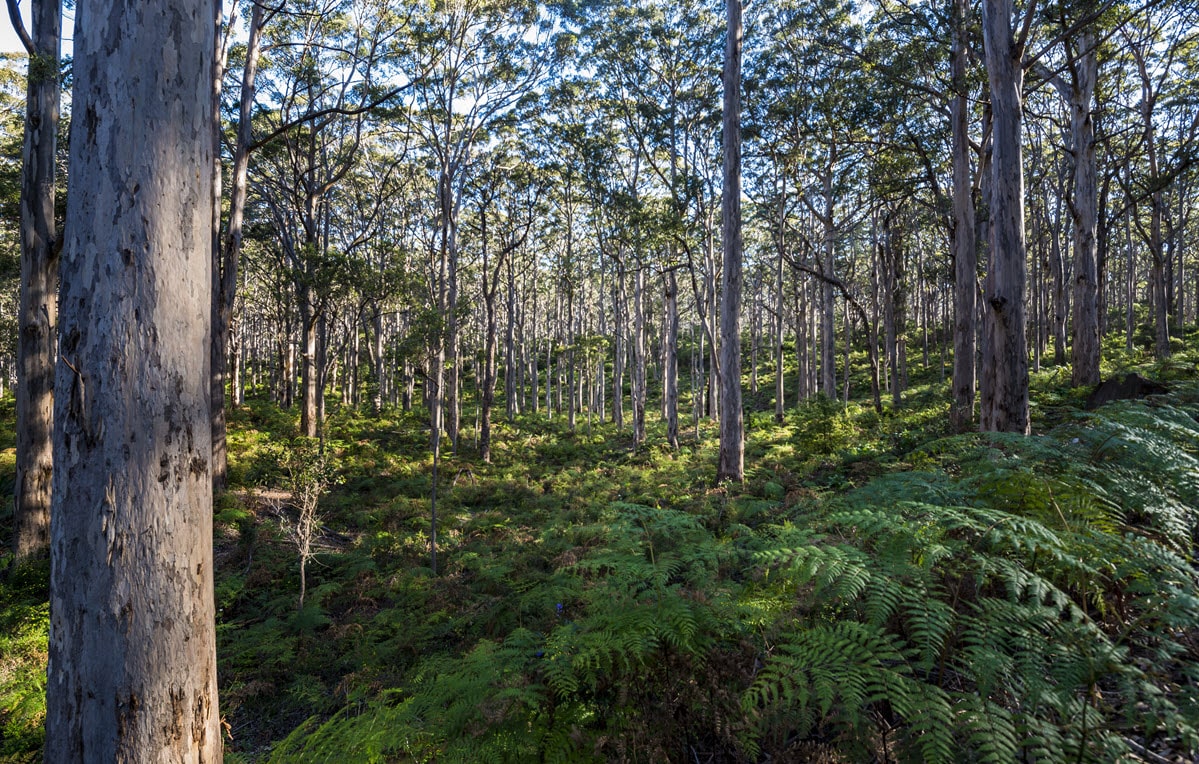
A view through Boranup Forest with many large Karri trees, Western Australia.
This stage of the Cape to Cape trail is a rather lengthy 21-23 km, which will take you roughly 8 hours to complete. This section of the trail is very diverse, with coastal scrub, leafy bushland, long beaches, and a cave to explore.
This is one of the longest and toughest sections of the entire track, however, so you need to start early.
One of the highlights is the amazing Boranup Karri Forest, which includes one of the tallest trees in the world. You can stay at Conto Campsite or walk 2 km further into Leeuwin-Naturaliste National Park to Point Road Campsite.
Neither of these campsites is free, and reservations are required at Conto Campsite — the only option with water.
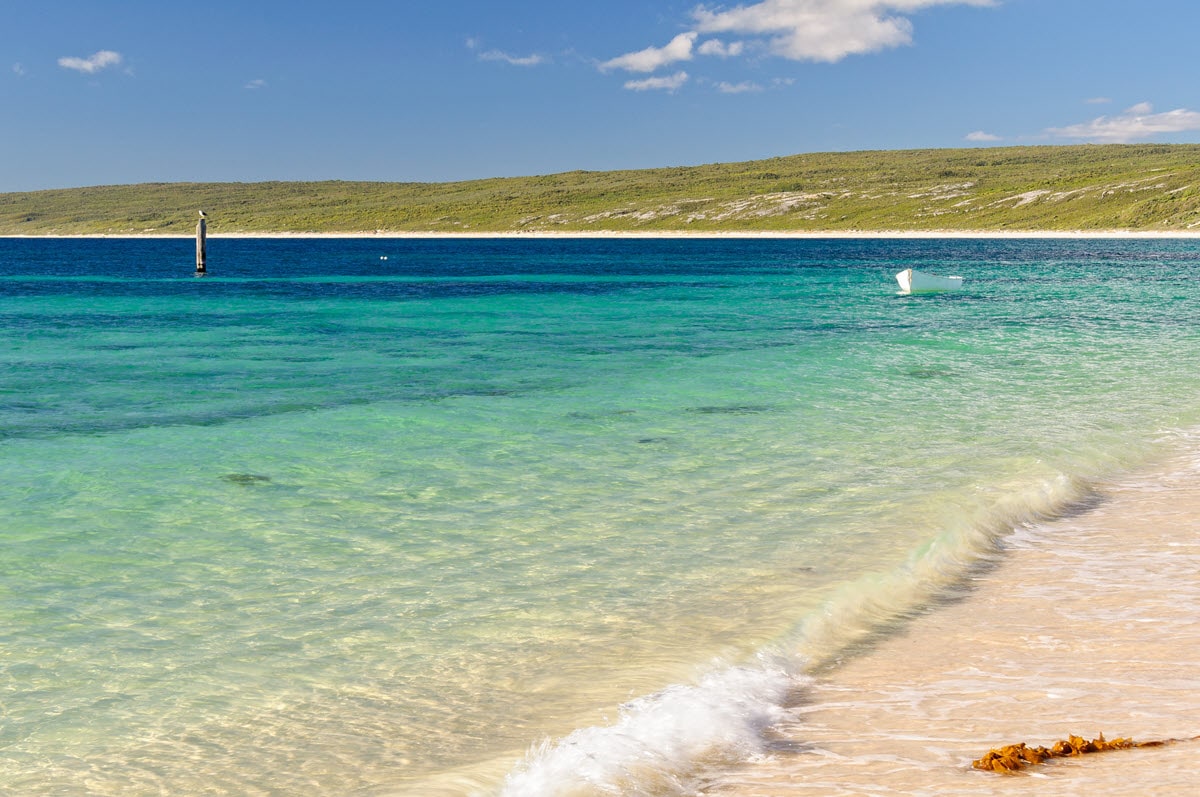
Looking over the clear turquoise water at Hamelin Bay in Western Australia.
Day 6 is the longest section of the Cape to Cape track at 26-28 km and around 10 hours.
This part of the walk is all about the beach, so dress appropriately to avoid sunburn.
While the day starts out quite gently with a trek through Boranup Karri Forest, before long, you're on the hot beach. Hamelin Bay is a great place for lunch, and if you're lucky, you may spot one of the area's famous giant stingrays.
Deepdene Campsite is free and has a rainwater tank.
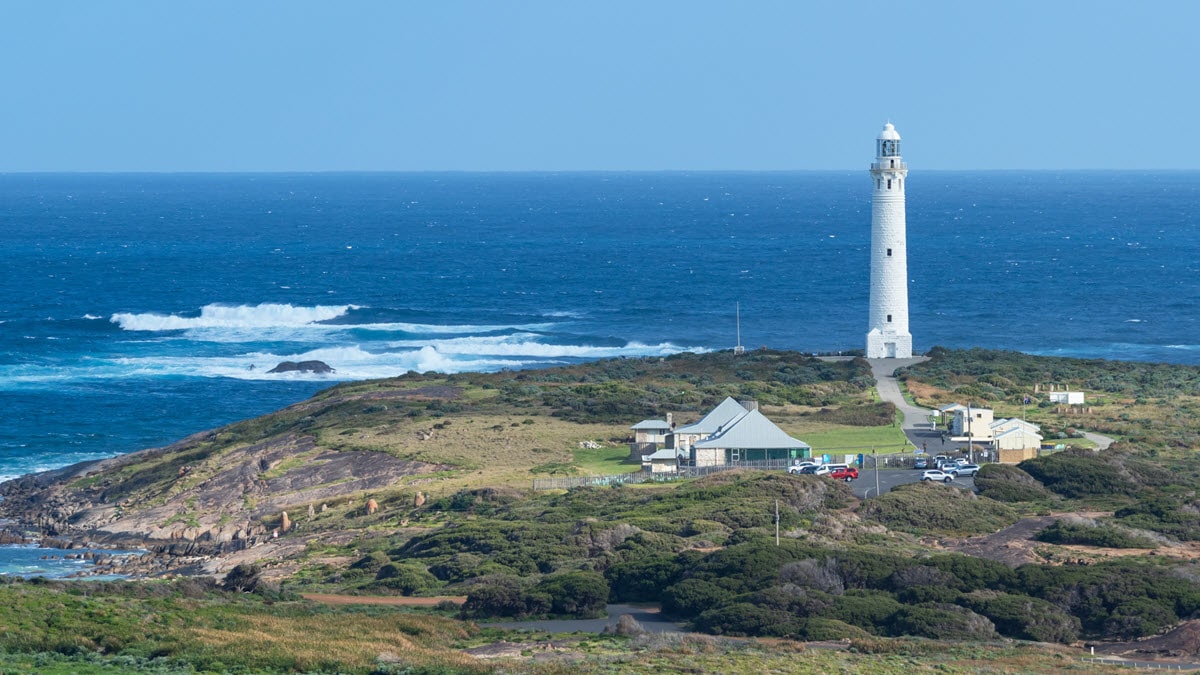
Cape Leeuwin Lighthouse in Leeuwin-Naturaliste National Park, Western Australia.
The final day of the Cape to Cape trail is quite short, at just 16 km and 5 hours. While this section is poorly marked, you can literally see your final destination for much of the journey.
Cape Leeuwin Lighthouse will appear on the horizon like a mirage, but it's a few kilometres past the official end-point of the trail at the Water Wheel. Once you get there, you can inspect the lighthouse from the inside out and buy a souvenir to remember your epic once-in-a-lifetime journey.
Once you've completed the Cape to Cape trail, there's still so much to see and do around the Margaret River region.
You can enjoy a nice warm shower, have a big hearty meal, and check out some of the most beautiful locations in Western Australia. From the local Margaret River wine region to artisan cheese producers, from scenic forest drives to horse riding trails, this amazing part of Australia has something for everyone.
If you're ready to embark on the Cape to Cape track and explore the Margaret River region, Summerstar Tourist Parks offer you a home away from home. Book your stay at Margaret River Tourist Park or Riverview Tourist Park for a comfortable and affordable caravan park stay.
What is the Cape to Cape trail, and how long is it?
The Cape to Cape trail is a 125 km hiking trail that runs along the Leeuwin-Naturaliste Ridge from Cape Naturaliste to Cape Leeuwin in Western Australia. The recommended hiking time is 7 days, but it can be completed in 4-5 days if you are up for the challenge.
What should I bring when hiking the Cape to Cape trail independently?
Some essential items that you should pack for hiking the Cape to Cape trail independently include a hiking pack, plastic bags, sleeping mat and bag, water bottles or bladders, portable stove and cooking gear, pocket knife and eating utensils, walking boots and socks, comfortable clothes and swimwear, first aid and survival kit, sunscreen, compass, and personal locator beacon, torch, batteries, and flint, toilet paper and trowel, and food and water.
What is the Cape to Cape walk track itinerary?
The Cape to Cape walk track itinerary is a week-long hiking schedule that covers 7 days. It starts at Cape Naturaliste Lighthouse and ends at Cape Leeuwin Lighthouse, passing through different natural attractions like Sugarloaf Rock, Wilyabrup Sea Cliffs, and Boranup Karri Forest. The itinerary includes walking 15-28 km per day, with the longest and toughest section on Day 5.
What are some things to do in Margaret River after completing the Cape to Cape trail?
Margaret River is a beautiful region in Western Australia that offers a lot of activities and sights. Some things to do in the area include visiting the local wineries and vineyards, trying artisan cheese, scenic forest drives, horse riding trails, and exploring beautiful beaches. Margaret River Tourist Park and Riverview Tourist Park are both comfortable and affordable caravan parks that offer a great place to stay while exploring the area.